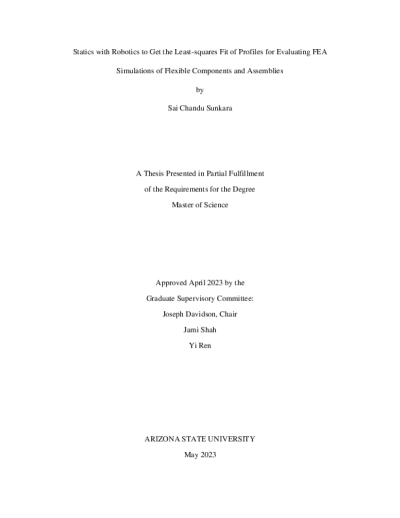Statics with Robotics to Get the Least-squares Fit of Profiles for Evaluating FEA Simulations of Flexible Components and Assemblies

Description
Least squares fitting in 3D is applied to produce higher level geometric parameters that describe the optimum location of a line-profile through many nodal points that are derived from Finite Element Analysis (FEA) simulations of elastic spring-back of features both on stamped sheet metal components after they have been plasticly deformed in a press and released, and on simple assemblies made from them. Although the traditional Moore-Penrose inverse was used to solve the superabundant linear equations, the formulation of these equations was distinct and based on virtual work and statics applied to parallel-actuated robots in order to allow for both more complex profiles and a change in profile size. The output, a small displacement torsor (SDT) is used to describe the displacement of the profile from its nominal location. It may be regarded as a generalization of the slope and intercept parameters of a line which result from a Gauss-Markov regression fit of points in a plane. Additionally, minimum zone-magnitudes were computed that just capture the points along the profile. And finally, algorithms were created to compute simple parameters for cross-sectional shapes of components were also computed from sprung-back data points according to the protocol of simulations and benchmark experiments conducted by the metal forming community 30 years ago, although it was necessary to modify their protocol for some geometries that differed from the benchmark.
Date Created
The date the item was original created (prior to any relationship with the ASU Digital Repositories.)
2023
Agent
- Author (aut): Sunkara, Sai Chandu
- Thesis advisor (ths): Davidson, Joseph
- Committee member: Shah, Jami
- Committee member: Ren, Yi
- Publisher (pbl): Arizona State University







